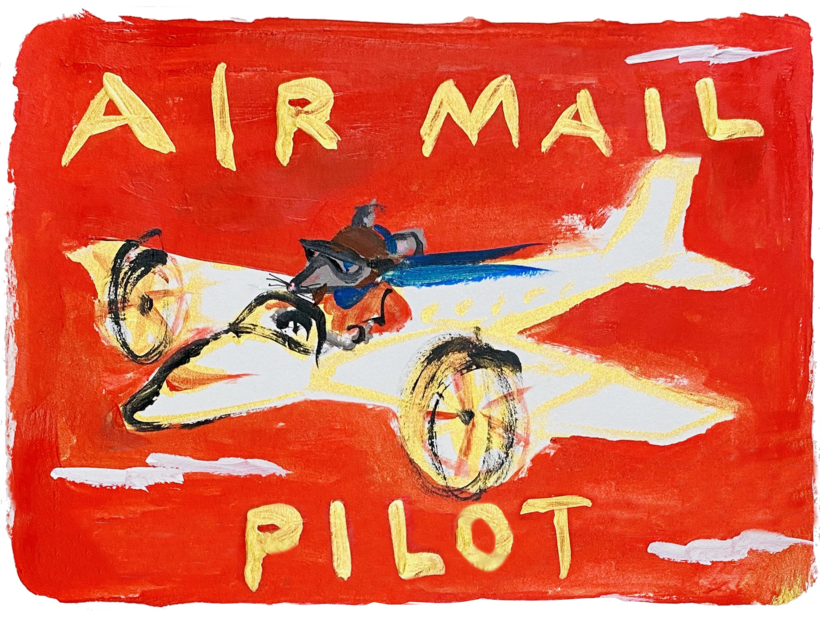Little Britain

Fed up with your three-bed semi? Do you yearn to own a sprawling property empire, including castle, ruined abbey, private harbour, slew of houses and a luxury hotel complete with tennis court and outdoor swimming pool? Perhaps you’ve always hankered for your own railway, riding stable with private menage and an entire parade of shops?
If so, your dreams could be about to come true.
Because for just $286,000 you can have the lot — including three churches, a couple of pubs, a cricket club, windmill, lighthouse, endless vehicles, goodness knows what else and more than 700 model tenants.

Every brick, tile and pane of glass is a twelfth of the normal size. Your entire empire fits cosily into a single lush acre on the ‘posh’ side of seaside town Bridlington, in what used to be a public car park. Oh yes, and your ‘model tenants’ are actual models that need painting and carefully arranging across your exquisitely landscaped kingdom.
The village of Bondville, often referred to as the ‘Little Britain’ community on the East Yorkshire coast, is up for sale. It has a 23-year lease, a full-size tea shop, a gift shop and it attracts thousands of visitors each year who flock there between Easter and the end of September (after which the falling leaves apparently ‘rather spoil the effect’).

As luck would have it, owners Tim and Jan Whitehead — who are selling up after eight years — insist experience is not necessary. ‘You just need to be practically minded, hard working and happy to lend your hand to everything — painting, glazing, electrics, varnishing and gardening, pruning all the miniature trees into shape,’ says Tim, 64, who previously worked in the motor trade.
He and Jan, 55, didn’t have a clue when they took over. In fact, they snapped up the village on a whim when a buy-to-let they’d been trying to purchase fell through and, the very same day, Tim saw it pop up in the estate agent’s window. ‘I couldn’t resist,’ he says.
Of course he couldn’t. The detail is superb — the tea rooms, the unisex hair salon with gossiping ladies under the driers, the hard-fought cricket match where the home team are always just a single point ahead and the robber forever running down ‘Letsbe Avenue’, with the police in hot pursuit.

It was all ‘rather tired’ when they bought it. But through trial and error (‘it was quite a learning curve’) and a lot of help from the original model makers who built it in the late 1980s and live nearby, the Whiteheads got it back to its former glory.
But running an entire village is hard work and Tim is coming up to retirement. So earlier this year they took the painful decision to pass on the whole village to someone younger, with energy, vim and vision, who’ll bring Bondville into the 21st century. And, who knows, perhaps finally let those poor cricketers break for tea?
Party Animals


Shades of History

Color is all around us—in nature, on signs, houses, clothing, and, as we might be noticing now more than ever, on the screens of our phones, computers, and televisions. In fact, we’ve gotten so used to spotting color anywhere you can think to look that when we happen to see black-and-white (pretty much the only option available for photographs and film up until the middle of the 20th century), it almost doesn’t feel real. One British artist, Stuart Humphryes, has made it his mission to bring history’s colorless moments to life for modern viewers.
May 8 marked the 75th anniversary of V-E Day, celebrating the surrender of Nazi Germany to Allied forces in 1945. Most of us haven’t lived through a war of World War II’s size (it’s estimated that upward of 70 million lives were lost), so it’s difficult to appreciate the jubilant celebrations that swept Europe and America when Germany gave up fighting. To remind us of the significance of that moment, the Royal Mail service, in Britain, has produced a series of postage stamps featuring photographs from that historic spring, bringing on Humphryes and a group of artists to colorize them.

The process of adding color to an image is incredibly painstaking—getting the color just right and maintaining a sense of authenticity means researching objects from that period and figuring out what they may have looked like. For an image of Trafalgar Square swarming with excited Londoners, for instance, Humphryes had to search through old video footage of the scene to find the exact color of a victory sign. Then he had to color it in by hand, a process which can take hours.
All the hard work is worth it, though. As Humphryes told The Mail on Sunday, “[V-E Day] represents such an emotive time in recent history, of national celebration, and I love being able to bring an immediacy to the past and help people connect to it by adding color.”
Looking at the stamps in their new, vibrant form, you may realize that we have quite a bit in common with the people in those V-E Day photographs—faced with a deadly enemy, we have limited information about what the future might hold. But have no fear, because we, like those colorful and hopeful folks, will get through it.


